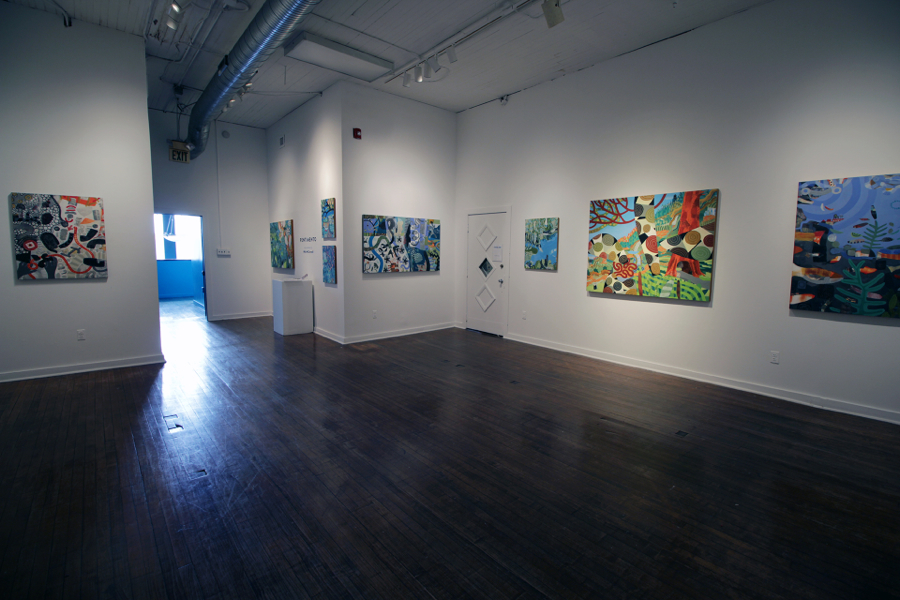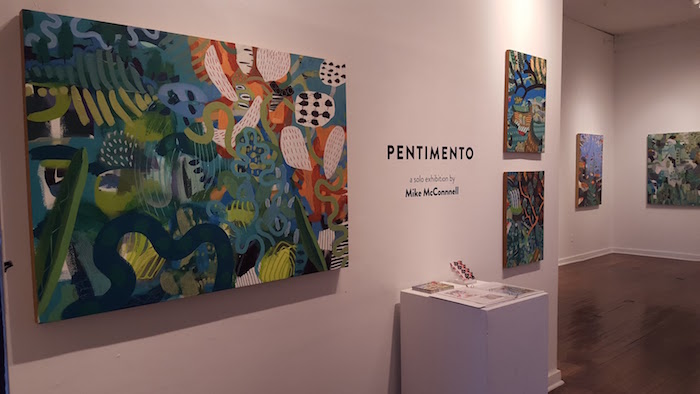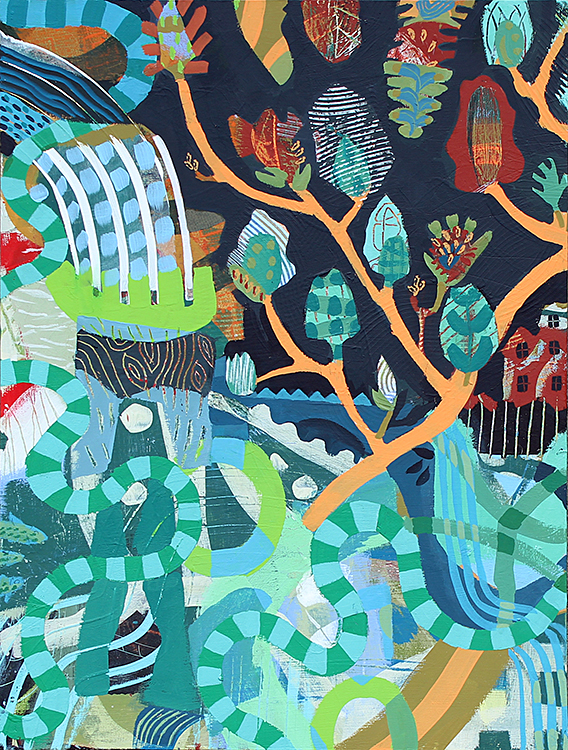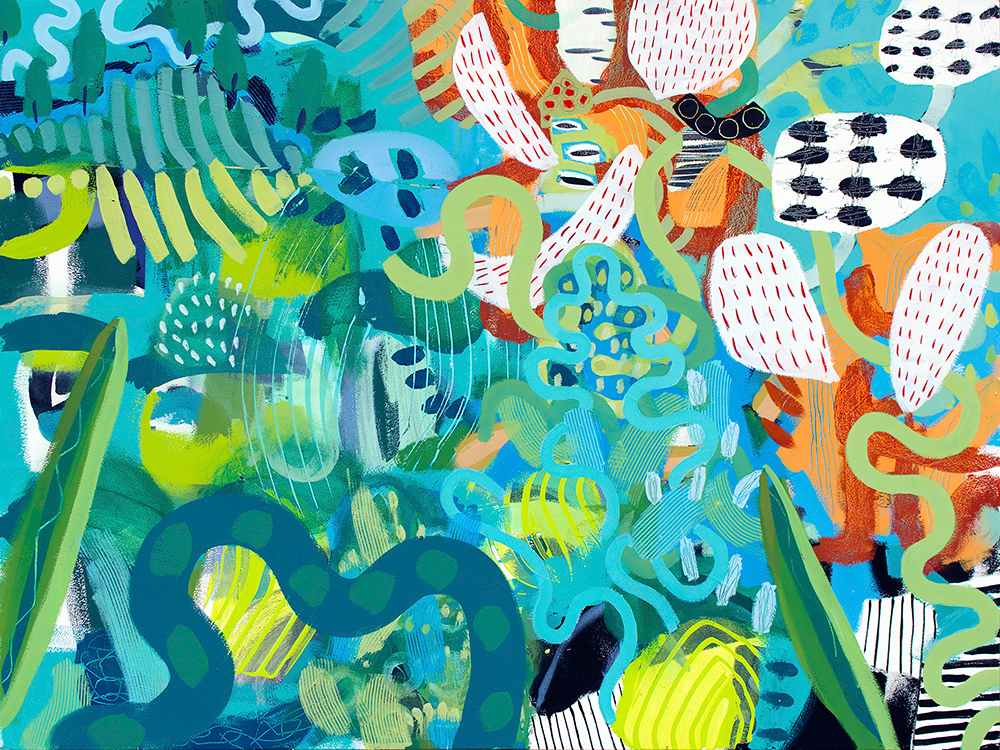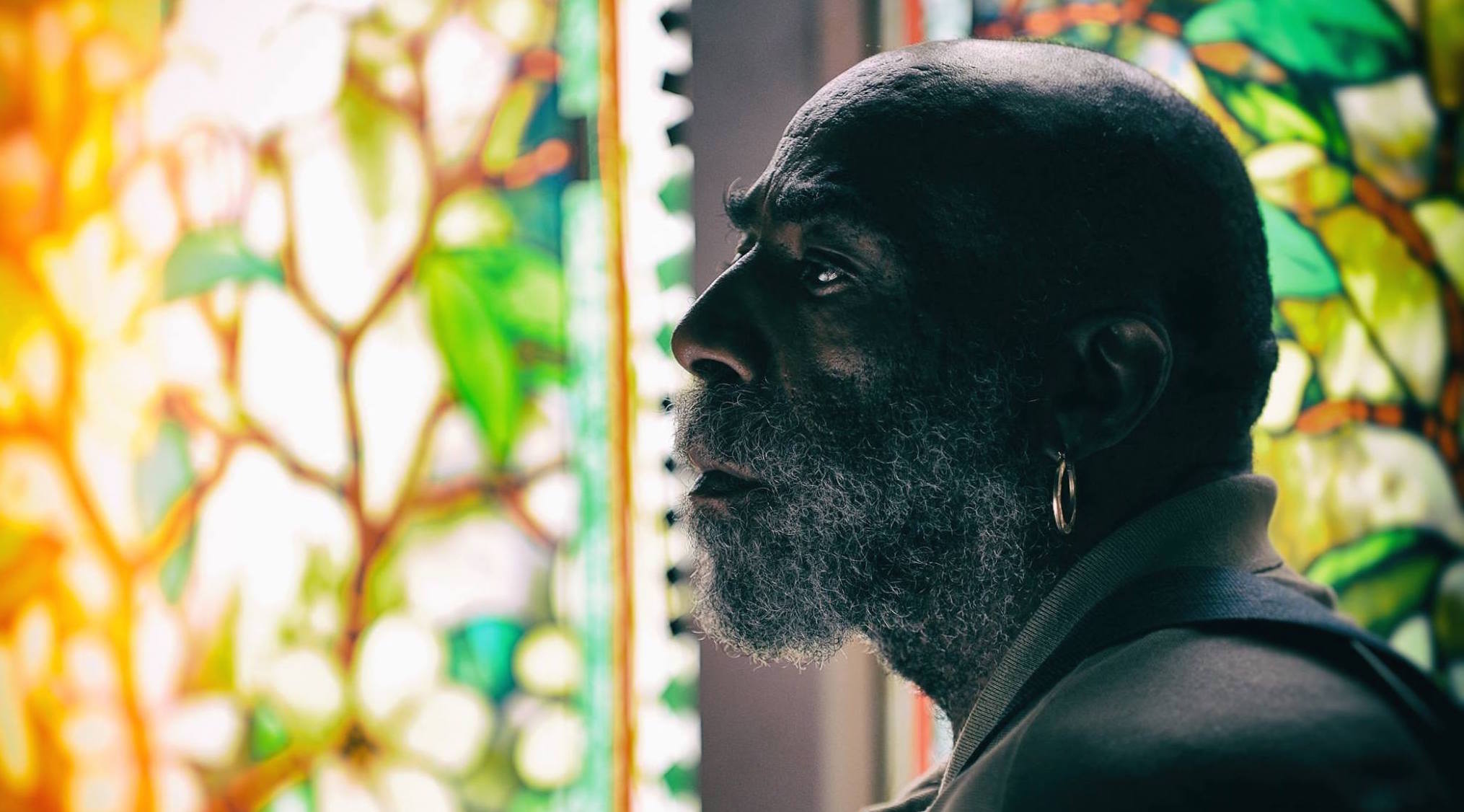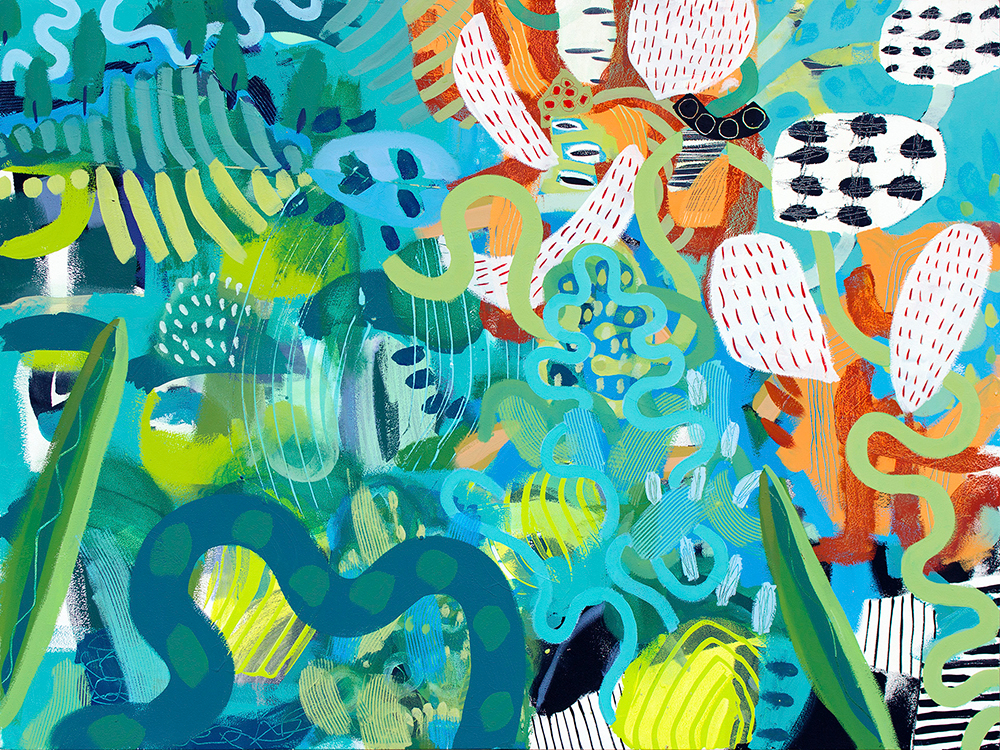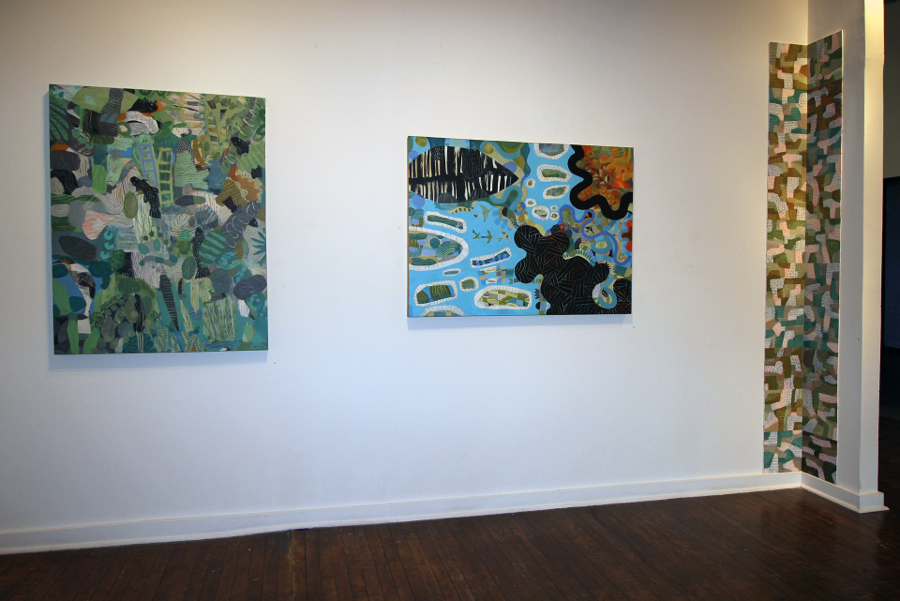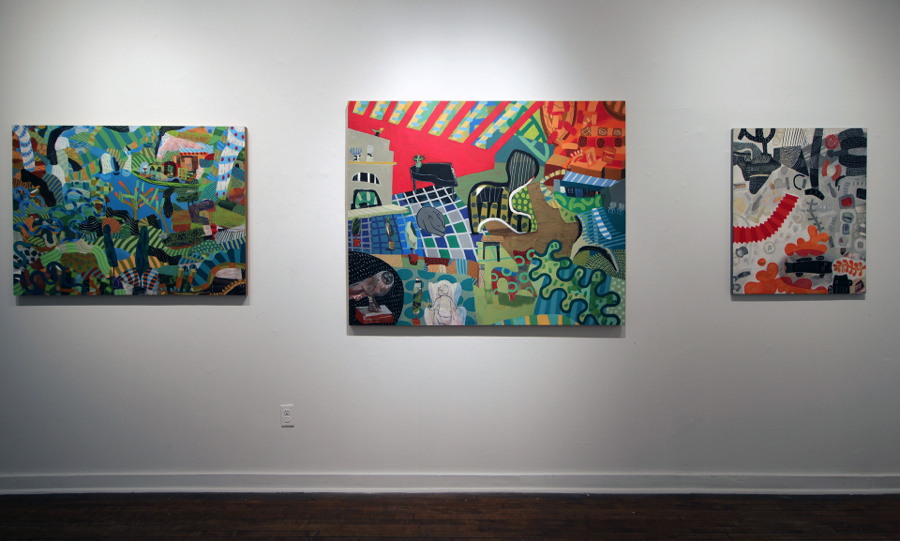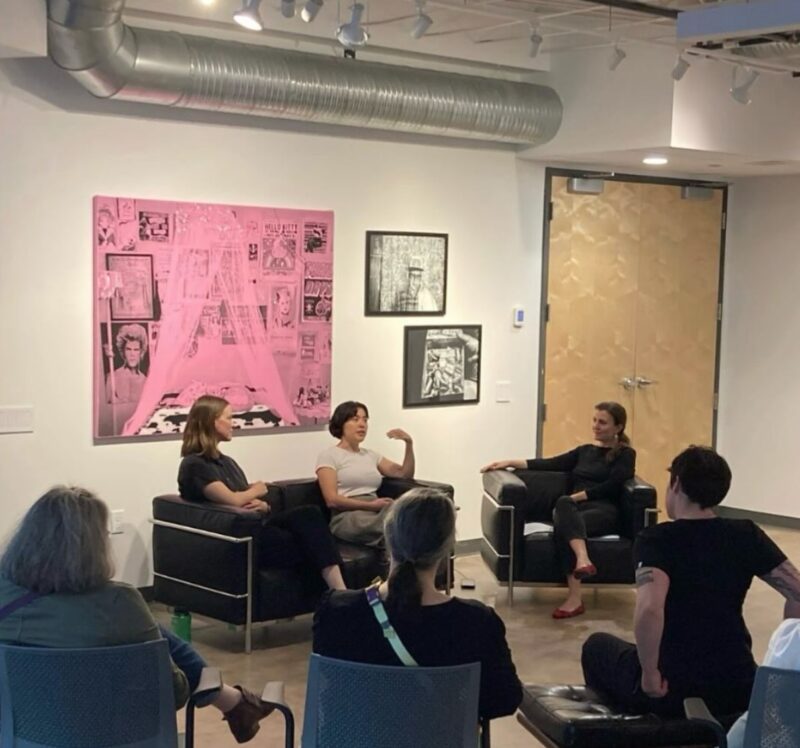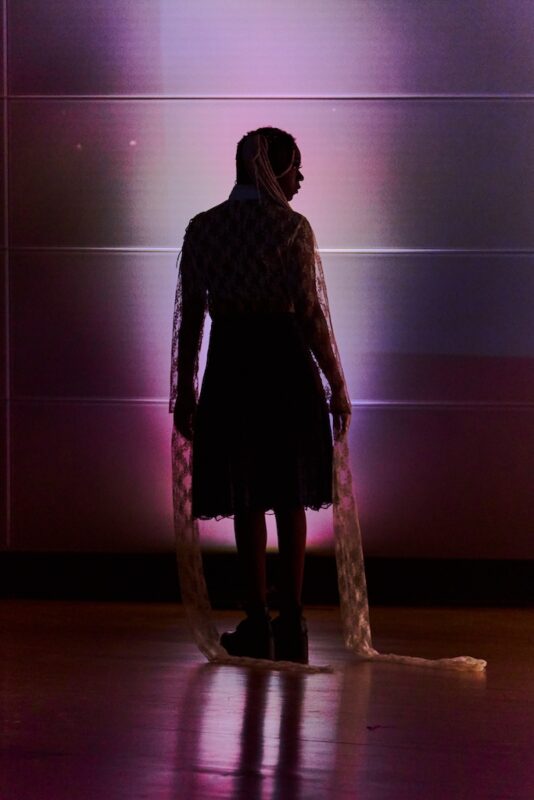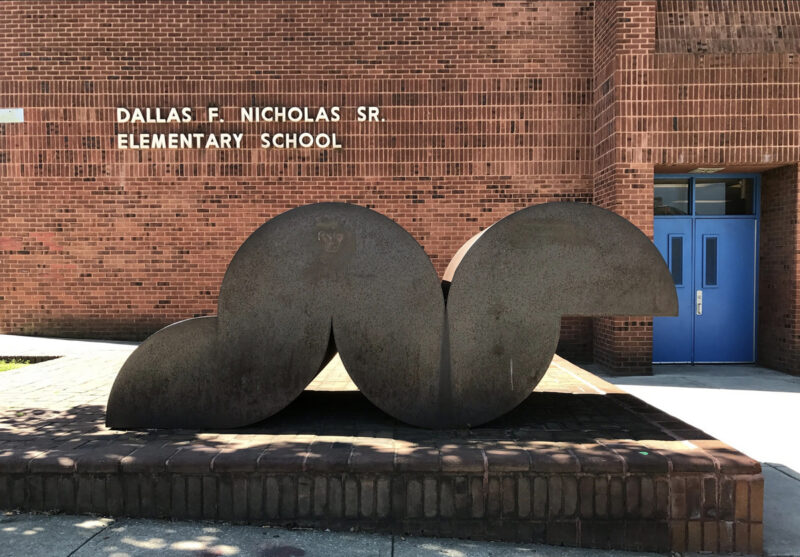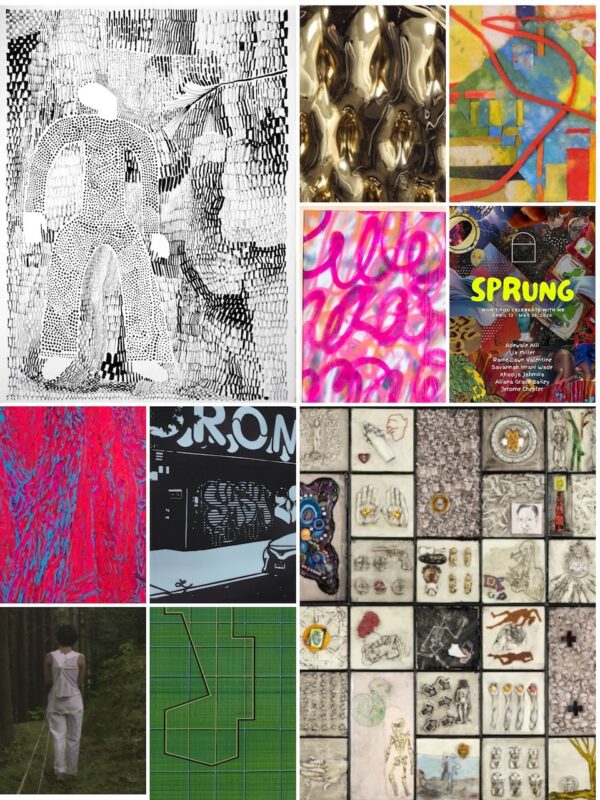Rowan Fulton on Pentimento: Paintings by Mike McConnell at School 33
Currently on view in the Members Gallery of School 33 Art Center, Pentimento, a solo show of recent paintings by Mike McConnell, serves up fresh and satisfying images, while also raising questions regarding the relationships between narrative, design, and painting.
At the risk of sounding dismissive, McConnell’s works come across collectively as happy paintings. Loopy squiggles and bouncy shapes bathe the gallery in arborescent greens, warm reddish browns, and lush blues, while icons of nature and domesticity convey an earnest appreciation of both exploration and home. Titles like “Snake River Picnic” and “Overheard at Giverny” relay the artist’s attentiveness to location and desire to respond to it through painting, and even McConnell’s process of scraping and sanding back into his marks to reveal former paint layers yields results which come across as inquisitive, rather than aggressive. This uplifting tone does not in any sense inhibit the works; on the contrary, I would argue that much of their appeal rests in their unpretentious, positive outlook on life.
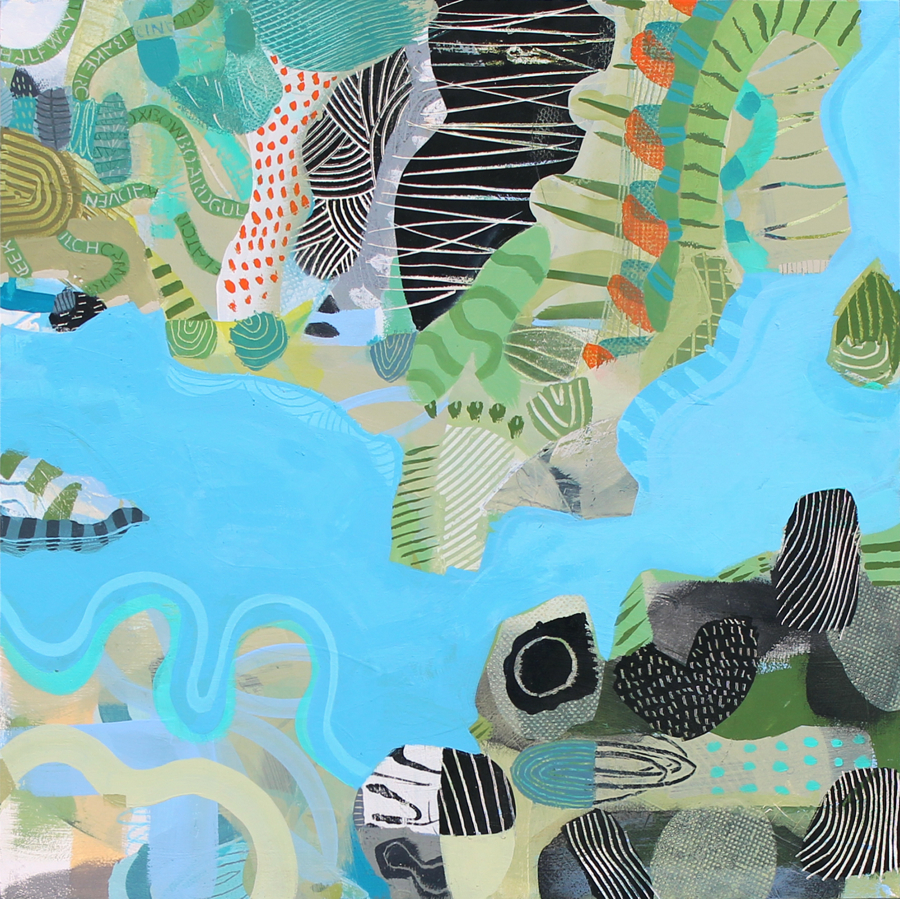
While the jubilant shapes and colors serve the work well, I am less convinced by their textural qualities. Upon inspecting the surface of these paintings, I notice moments of unappealing acrylic buildup, the result of painting flat planes of color over unsanded densely-painted areas, and this leads me to a concern regarding the aim of the work. McConnell claims that he uses his painted panels as sketchbooks of a sort, which he saturates with elements of personal narrative, before editing and concealing or pulling back areas of the painting in a sort of collage process. This seems central to the artist’s ideas, and the name of the show itself, “Pentimento” is an Italian Renaissance term referring to the process of changing one’s mind and painting over previous details. This interest does not connect so well, however, to the medium of acrylic paint, which does complement some of McConnell’s clean, hard-edged planes of color, but in other areas produces a tough, plasticky film which is unforgiving after drying. I would be interested in seeing the artist explore media which better serve his interests in selective obfuscation and layering.
It is worth mentioning that McConnell, a graduate of Maryland Institute College of Art (’75), has had a successful career in commercial illustration and a background in graphic design before dedicating himself completely to fine art, as his paintings seem to live in the intersections between these visual languages. We detect nameable objects (a bike, a sleeping dog) and feel compelled to weave them into a narrative, while at the same time, consistent design elements (stripes, squiggles, patterns) infuse the work with an unmistakable designer-sensibility.
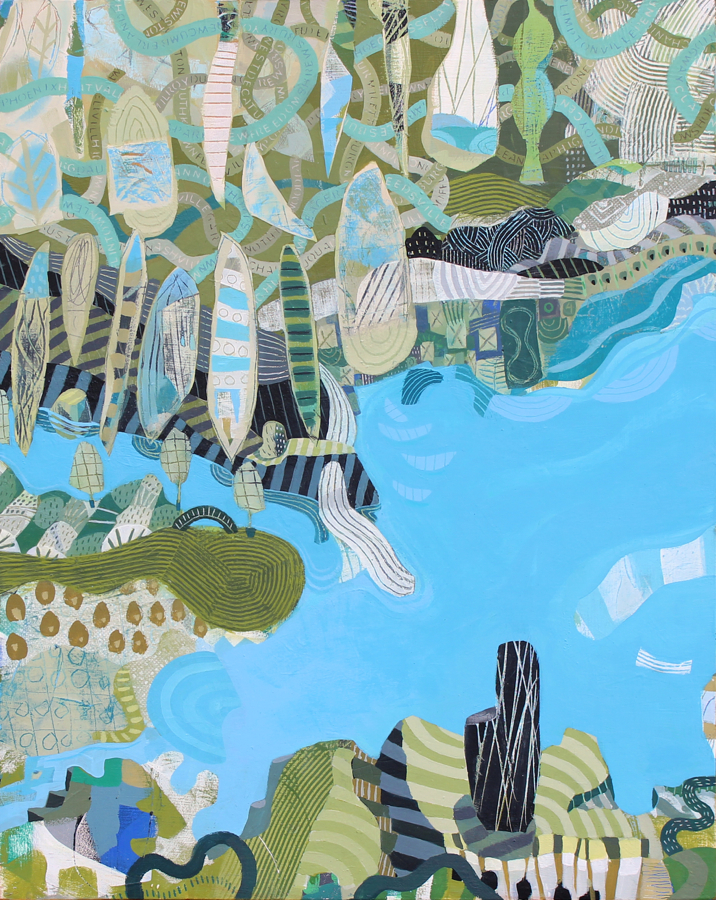
In places, these paired sensibilities come together beautifully, as in “Chautauqua Opening,” in which a wide open swatch of watery blue grounds the image in atmospheric logic, while 2D design elements (text scratched into coiling bands and hovering pockets of colorful pattern) activate the upper portion of the composition. In a direct, designlike approach to discussing themes of exploration, the scratchy text lists the names of cities, however the forms of the bands are open-ended enough that we are not handed a clear explanation of their meaning. In contrast, the elements of design and illustration, are all but battling one another in “Through Chandler with Jaehyo,” the painting which has been featured on much of the advertising material for the show. Here, cut-out shapes of a muddy spiral pattern are forced haphazardly on top of an intact scene of a verdant mountain, and the effect is jarring and unappetizing.
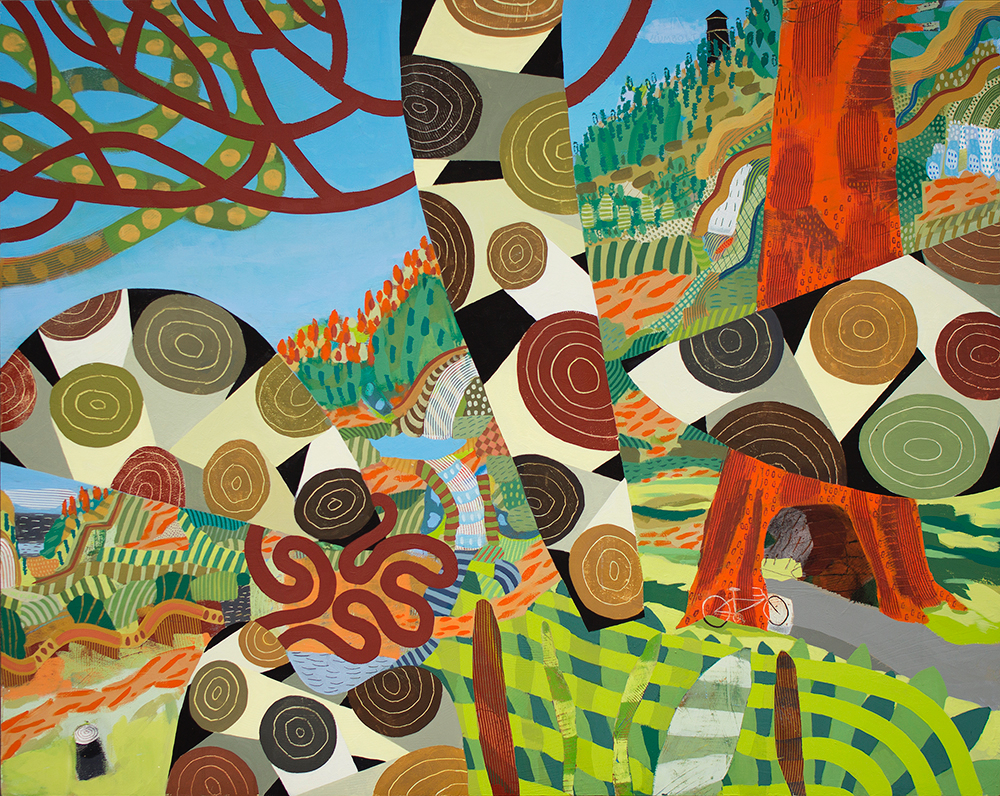
Particularly appealing among the paintings, “Heron” stands out from the rest by employing a selective color palette of silvery greens and grays. By paring down the colors, the artist relies more on directionality of mark and texture to convey a sensation of swift, fluid movement. Here, McConnell is unencumbered by too much recognizable imagery (we are provided with the unmistakeable forms of fish popping out amid the brushstrokes, and the impression that we are observing them through clear water, from an aerial perspective) in exchange for a dense buildup of predominantly abstract marks. Here, I am most convinced that the scratchy marks and clumsy edges are necessary to the character of the work, and I found myself spending the most time with this painting.
Pentimento will be on view at School 33 Art Center, located at 1427 Light St. in Baltimore, MD, through August 22, 2015.
Author Rowan Fulton is a Baltimore-based painter and writer.
